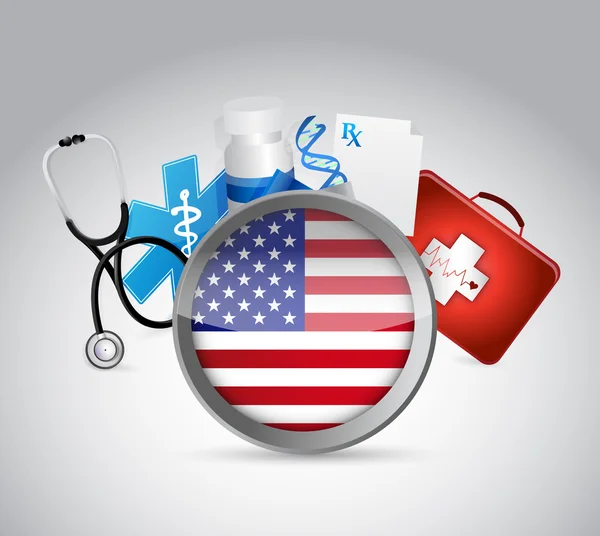The American healthcare system is arranged in a convoluted bureaucracy. In contrast to the rest of the world, where healthcare facilities are mostly controlled by governments or businesses from the private sector, the majority of hospitals and clinics in the US are owned by private non-profit organisations. However, the United States is the nation with the highest healthcare expenditures globally. While a sizeable amount of these expenditures are covered by public payers including Federal institutions, State and local governments, and private insurance, they can also be paid for by individual contributions and private insurance. However, unlike other industrialised countries, the US health system does not provide healthcare to all of its citizens.
The majority of the United States relies on businesses that voluntarily offer health insurance coverage to their employees and dependents because there is no one statewide system of health insurance. Additionally, the government provides programmes that often cover healthcare costs for the weaker segments of the population, such as the elderly, disabled, and underprivileged. All of these programmes are unique from one another and each target a particular group of people. In the US, obtaining health insurance is not simple. Although some people would think that once you have money, everything is simple as pie, things are actually a little trickier. To acquire the right insurance, one must be very careful and alert.
Health insurance for non-citizens in the United States
Health insurance is not a requirement for everybody living in the US, and the US government does not provide it to all of its people. Although it is optional, it is crucial and highly advised because health care is more expensive in this nation than in any other place in the world.
Requirements for Health Insurance for Foreign Visitors to the US
Although short-term visitors to the United States with B-1/B-2 visas are not obliged to carry health insurance, it is strongly advised that every tourist get insurance before their trip to the nation. The main justification for getting insurance is the enormous expense of healthcare in the US; even a check-up for a little headache will set you back hundreds of dollars, while a broken limb will set you back thousands. Since health incidents are seldom anticipated, it is vital to be ready for them and get insurance so that, in the event of necessity, you may save money.
Things to be aware of
There is no free healthcare for everybody. Both citizens and visitors to the United States are not eligible for health coverage. Anyone who receives medical care must pay for it.
The cost of healthcare is prohibitive. A $7,500 cost might result from breaking your leg, according to a U.S. government website. It would likely cost around $30,000 to stay in the hospital for three days. The majority of Americans have health insurance. If you are sick or hurt, having health insurance keeps you from having to pay a lot of money to doctors or hospitals. You must pay a health insurance provider on a regular basis (referred to as “premiums”) in order to get health insurance.
The company agrees to pay some or all of your medical expenses in return. Study up on health insurance. Your “primary care provider” (PCP) will be the source of the majority of your medical services (PCP). You can choose a PCP who is a part of your insurance company’s network if you have health insurance. You can choose a PCP at MIT Medical if you purchase an MIT health insurance plan. Either a doctor or a nurse practitioner might be your new PCP. When you need a physical examination or lab tests, are ill, or require treatment for a chronic illness like diabetes or high blood pressure, you should see your PCP. Find out more about PCPs.
In most cases, you’ll need to make an appointment to see a doctor. You must call your PCP’s office to make an appointment if you want to see your PCP. You must be able to articulate your need for the appointment when you call. You will soon be given an appointment if you are unwell or injured. You could have to wait a few weeks or even a month if all you need is a routine physical examination.

